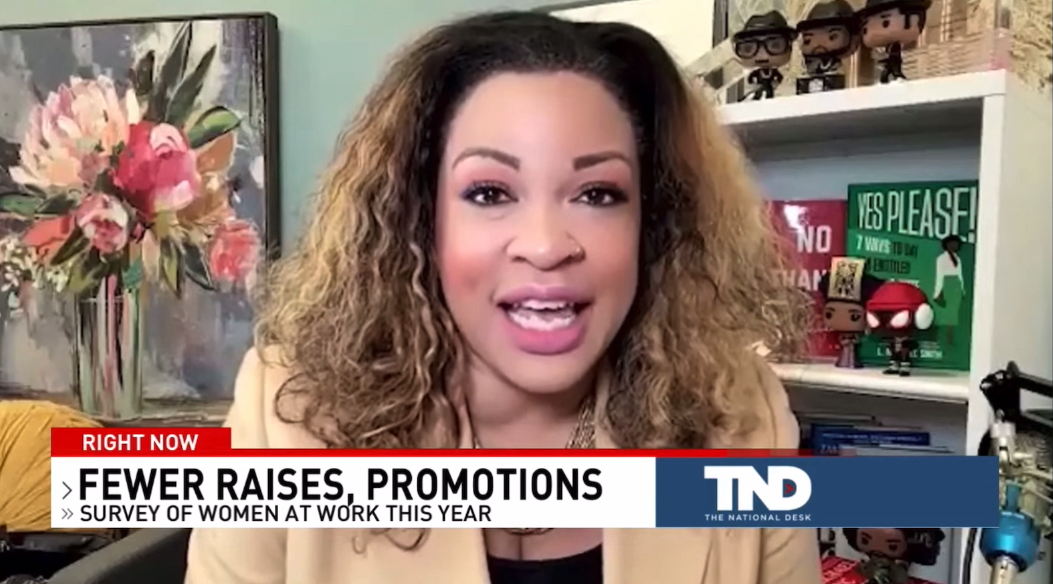What will you actually DO to impact real change for black employees?

Photo Credit: ThriveGlobal
I usually begin my messages with storytelling, and while I could tell any number of stories of my experience with discrimination in Corporate America, I want to humanize this message by focusing the discussion on you–the leader who actually has some decision- making power to do something about the black employee experience in your workplace.
I’ll start by asking this question:
How will you move this important conversation about racism forward in the workplace so that it benefits employees?
First, we need to not be afraid of the word.
Say it.
Racism.
It’s as if it’s been struck from the corporate lexicon. It’s an unwritten rule to not use that word unless the EEOC is involved. By then, it’s too late.
We need to move beyond that.
Yes, most people now get that black colleagues are traumatized by events like the murder of George Floyd, but have you considered how events like this literally LINK to the experience in the workplace for your black employees?
It is indeed tethered. Consider racism in the U.S. has been a smoldering crisis for nearly 400 years. That not only do your black colleagues bring that trauma in with them everyday, the systemic racism also comes to work with their colleagues, on every level.
Yes, there are racists in your halls. It’s shocking to consider.
We’ve found nice words for it, and it typically is a lot cleaner and professional looking than that video of the police officer with his knee dug into George Floyd’s neck.
It even has better, more palatable names: bias, unconscious or not. But the effect and the root of it is all the same. Career and character assassinations that happens daily do immediate and longterm damage to people’s very livelihoods.
Sidelined, stifled even strangled talents that are no doubt incredible contributors and credentialed hit the black ceiling in Corporate America because of microaggressions and discrimination, and no, they won’t call HR because of fear of reprisal or being deemed a trouble maker. They may not even want to take the time out of their lives, their peace to even consider how these investigations and legal actions can drain their souls and pocketbooks, let alone their reputations. So most people just take it, and then return to work the next day.
After all, it’s how our parents did it. The stories my father has told me about being a first generation computer programmer and being demeaned on a daily basis make my heart break, but I reasoned in my mind that that was the 60s. And while much of what he experienced was more overt, the covert discrimination still lives on in 2020.
It’s time we called it out.
To add insult to injury, there is an extremely broken-to-nearly-non-existent pipeline for blacks to leadership.
A precious few make it to the top, not many.
Four years after her retirement, we are still waiting for the next Ursula Burns, retired CEO of Xerox, the first and only black woman to sit at the helm of a Fortune 500. Yet the U.S. Census says that black women hold more advanced degrees than any other group. Where is the disconnect?
How do we begin to take ACTION to change the experience black employees have in these organizations where according to Catalyst Research (2017) white maleness is centered?
Think of how many more “teeth” these public statements of solidarity would have if your employees actually could attest to a wonderful employee experience without question or overlooking what happened in that meeting just last week when someone took credit for their idea.
What if they actually didn’t leave the organization before making it to the executive levels because they were unhappy? What if they trusted you enough to actually let you know what happened? What if they weren’t pushed out because of petty, discriminating leadership that is allowed to stay although everyone knows they’re toxic?
Employees…all of them… are your most important brand ambassadors, and they carry the story of their experience in your company with them for the rest of their lives.
Know that hosting a few town hall meetings or sending out a employee few surveys is not enough. Dedicate dollars that are substantial and sustaining.
Make it a priority.
It isn’t just a job for your D&I business unit to correct what is wrong. This is everyone’s responsibility, from the very top, down.
How will you move from statements to action and incentivize your leadership teams and employees to get involved? How can you ensure that all lives matter by taking a closer look at the quality of black lives in your organization?
Your employees ARE the community, and they bring the outside into your companies each and everyday.
How will you begin to change hearts and minds so that you can really impact change?
Big painful moments can bring about big change. I for one can’t wait to see what’s on the other side.
Are you in?
L. Michelle Smith
Certified Executive & Business Coach




![[Inside Podcasting] Lists The Culture Soup Among the “Anything But Boring” Business Podcasts](https://www.lmichellesmith.com/wp-content/uploads/2018/10/0FDBD0AA-AAAD-4871-9EA8-F9065C179139.jpeg)





